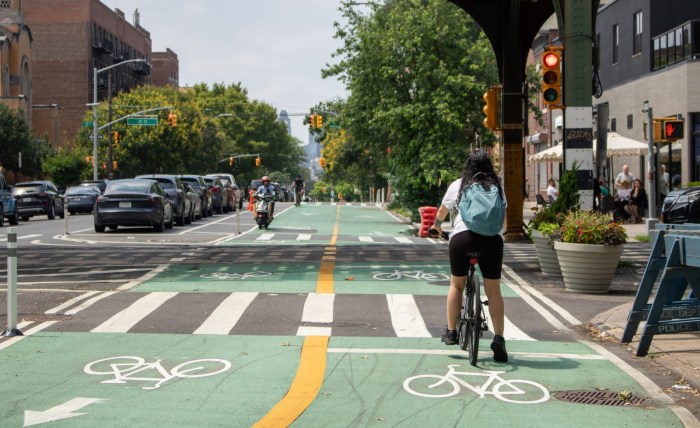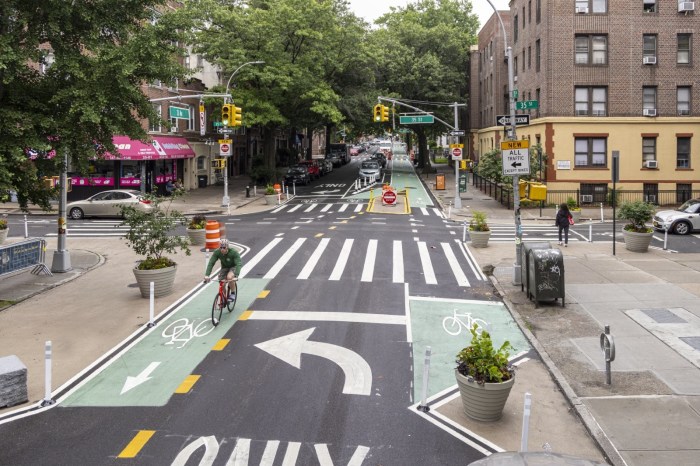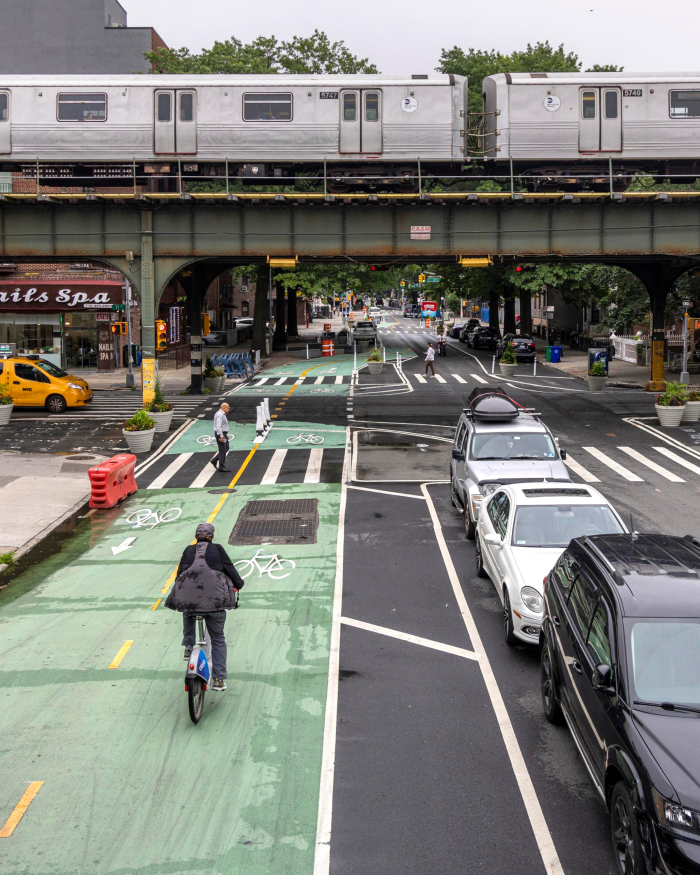
Dedicated cycling space along 31st Avenue connects New Yorkers to existing bike infrastructure while enhancing safety for all road users. NYCDOT
July 3, 2025 By Queens Post News Team
The New York City Department of Transportation (DOT) has completed the first phase of a major redesign of 31st Avenue in Astoria, transforming the corridor into a bike boulevard aimed at improving safety and accessibility for pedestrians and cyclists.
Unveiled Wednesday by NYC DOT Commissioner Ydanis Rodriguez, the new street design features over 26,000 square feet of added pedestrian space, a two-way protected bike lane and intersection upgrades meant to slow turning vehicles and reduce crashes.
“31st Avenue’s innovative redesign as a bike boulevard will help protect pedestrians and cyclists, support Open Street operations, and strengthen connections to the 16.5 lane miles of protected bike lanes, and 21 lane miles of standard bike lanes and shared lanes in the area,” said Rodriguez. “Streets are public space, and designs like this show that we can reimagine the use of public space to benefit all road users.”
The project, which runs from Vernon Boulevard to Steinway Street, establishes a critical east-west cycling connection in Western Queens. It builds on the popularity of the 31st Avenue Open Street, a community-led initiative that has hosted weekend programming and expanded public space access since its launch during the COVID-19 pandemic.

Newly installed planters and granite blocks improve visibility and painted curb extensions along 31st Avenue. NYCDOT
Traffic-calming measures include new one-way traffic patterns, intersection treatments that reverse vehicle flow to discourage speeding, and painted curb extensions that reduce crossing distances. The DOT also installed planters, granite blocks, and hardened daylighting features to improve visibility for all road users.
According to DOT data, 53% of daily trips in Astoria are made on foot, 34% by bicycle, and only 11% by car, making the redesign a direct response to how residents already use the street. The added bike infrastructure connects seamlessly with existing protected lanes on Crescent Street and Vernon Boulevard, and further supports cycling access to the Queensboro Bridge, where the Adams administration recently doubled space for cyclists and pedestrians.

NYCDOT
New bike-specific signals, flashing yield signs, and stop signs along the corridor also aim to improve safety, particularly at intersections, where most crashes occur.
The project was developed in partnership with the 31st Ave Open Streets Collective and The Horticultural Society of New York (The Hort). Between 33rd and 35th Streets, the new shared street design supports flexible use, allowing for regular weekday traffic as well as weekend Open Street programming. Granite blocks in this stretch provide informal seating, while delineating space for pedestrians and cyclists.

A shared streets design supports operations for the 31st Avenue Open Street by expanding pedestrian space with painted sidewalk extensions. NYCDOT
The transformation of 31st Avenue marks another milestone in the city’s Vision Zero initiative, launched in 2014 to eliminate traffic deaths and serious injuries. In recent years, the DOT has accelerated efforts to expand bike lanes and reclaim space from cars, including projects on Skillman and 43rd Avenues in Sunnyside, Queens Boulevard in Forest Hills, and Northern Boulevard in Jackson Heights.
The city plans to continue expanding protected bike infrastructure citywide, with more than 30 miles of new lanes slated for completion in 2025.
For updates on Open Street events and operations on 31st Avenue, visit 31aveopenstreet.org.






